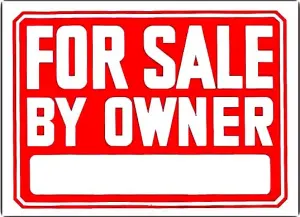
I recently attended a discussion on startup company culture hosted by Ridge VC. I have always thought that company culture is important, but before this discussion I had never considered why it is important. I suspect many founders haven’t either, and I recommend doing so. Here are my thoughts:
What is culture?
Company culture is a set of values that are shared by everyone at the company. Sometimes they are tangible (“spend as little money as possible”) and sometimes they are aspirational (“deliver the best customer experience possible”) but every company has them even if they don’t write them down. It’s easy to dismiss culture as a side effect of a large groups of people working together, but culture serves a very important purpose in companies: it is a form of management.
When a leader is managing her team there are three ways she can do it:
- Direct decisions. The leader can make decisions herself, such as raising prices or hiring someone. This is the most direct but least scalable option.
- Decision Frameworks. The leader can give her team a framework for making decisions which ensures that any decision will be roughly what the leader would have decided. This scales much better than direct decision making but relies on knowing the possible decisions that need to be made so that a framework can be prepared. A great example is budgeting, which controls when and how you can spend money at a company.
- Company Culture. Company culture captures all the remaining decisions, the dozens of micro-decisions made every day (how long should this meeting be?) and the surprise decisions that no one saw coming (what do we do if a team member becomes very sick?). The company values ensure that when people make decisions the leader does not even know are being made, the results follow their guidance.
That last part is the purpose of culture, to help the company make decisions without supervision. The decision might be as small as whether you should stay late working on a particular problem or whether you should hire someone for a given job. While the most important decisions at a company are made directly by leadership, the most decisions are driven by company culture.
What makes a culture “good”?
If culture is a form of management, then what defines a “good” culture? I believe a good culture improves the productivity of the company. This is why it’s hard to imagine the financial impact of having a good culture: it’s one step removed from the results.
Culture increases Productivity increases Results
In many organizations, it’s clear how this path proceeds. For example, Facebook’s “Hacker Way” which emphasizes moving fast, even if it means breaking things, increases productivity by removing barriers and rewarding speed. In other organizations the path is less clear since the culture may drive hiring of certain types of people that are very productive together and that dynamic drives results.
For almost all people, feeling safe and welcome is a critical part of productivity which is why we value company cultures that respect people. If the company culture includes caring about employees, then those employees are likely to care about the company and become more productive as a result.
What makes a culture “bad”?
One of the problems with the above definition of “good” culture is that it can be hard to determine if results are driven by the culture or other factors. Uber, for example, has found great financial success while creating a culture that clearly inhibits productivity by promoting sexism and discrimination. Their productivity is so high that the negative impact of their culture still allows them to be successful. So it cannot be as simple as saying that if you have good results you have a good culture.
The better question is whether you are getting the maximum productivity from your team. If your culture is bad then the answer will be “no”, as evidenced by anyone who works at a meeting-heavy organization when time is spent discussing instead of doing. It is hard to measure productivity in general, but even harder to imagine potential productivity in different corporate cultures so this is a judgement call by the leadership.
Which brings us back to why I never considered why culture was important before the discussion I mentioned. As a leader, you make a lot of judgement calls on how best to build your business and the decisions about your culture are one of them. It is going to be very hard to quantitatively measure productivity of your team using more than one culture, so you need to choose what you think will product the best results. As with most things, the right answer will also change with time.
I never considered why culture was important because, intuitively, I wanted my teams to be as productive as possible and the culture was simply part of doing just that. People do better work when they are happy, so I wanted values that made them happy. People work harder when they have ownership of their results so I wanted values that rewarded ownership. I suspect many leaders followed the same path to their values.
What does this mean for your company culture? Your culture is a management tool whether you like it or not. Making it a driving force in your success is easier than fighting against a bad culture that holds you back, so it is worth the time to be purposeful about your culture.
Title image provided under the Creative Commons Attribution-Share Alike 4.0 International by Wikipedia user Trollbackco.







